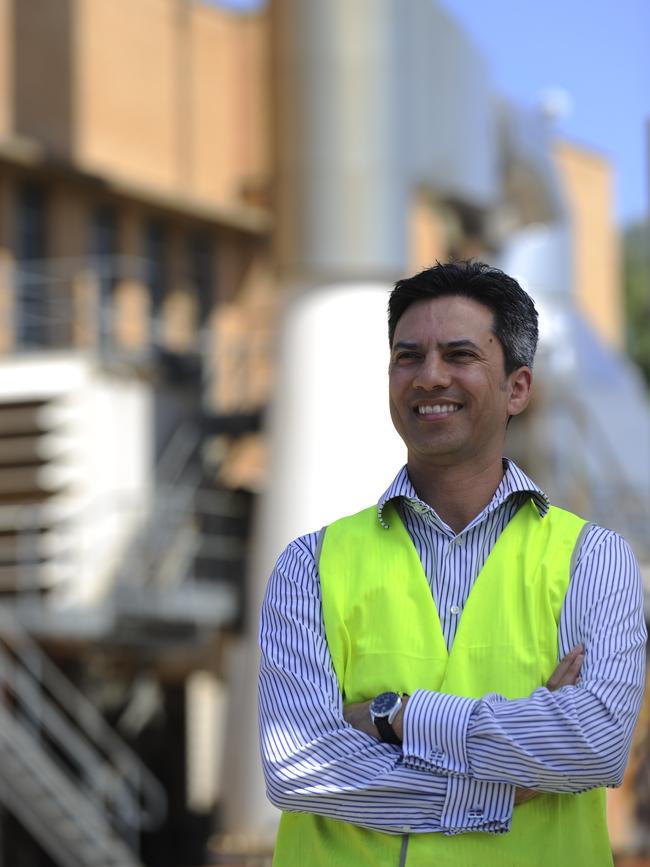SA Power Networks trial of flexible limits on rooftop solar feed-in
Instead of switching off your solar, a new project will increase how much you can feed in to earn extra dollars. Meanwhile, power wasn’t just free, they paid people to use it last month.
SA News
Don't miss out on the headlines from SA News. Followed categories will be added to My News.
Households in South Australia will be able to make hundreds of extra dollars a year by feeding more of their solar power energy into the grid under a new project.
A trial with 600 households in SA and Victoria will test changing from a fixed to a flexible limit on how much can be sold into the grid.
Currently, a fixed limit of 5kW prevents SA households from selling the full output from their solar panels much of the time.
In SA, about a third of homes have solar and 4000 to 5000 applications a month are being lodged for new or upgraded systems.
The solar project being run by SA Power Networks and Victoria’s AusNet Services will cost $4.84m with the Australian Renewable Energy Agency providing a $2.1m grant.
The 12-month trial aims to develop the technical capability in collaboration with equipment manufacturers, paving the way for a smart, flexible limit connection to become standard.
“If the trial is successful, it should help more customers sell more of their energy into the market and benefit from cost savings on their energy bills,” ARENA chief executive Darren Miller said.
ARENA said there was a developing problem of congestion where new solar customers would not be able to sell their power, which would be “inequitable”.

SAPN expects flexible limits to accommodate up to 10kW and with other initiatives will facilitate a doubling of the amount of rooftop solar going into the grid within five years.
“We want more solar, not less,” SA Power Networks spokesman Paul Roberts said.
The flexible limit would decrease when the grid was overloaded.
The announcement comes just days after State Government rules took effect to force all new solar to be capable of being switched off remotely when the grid is at risk because of excess rooftop solar.
The switch-off rules are regarded a short-term fix which would only be applied on rare occasions but which will cost households a management fee.
Meanwhile, the extreme volatility of the electricity market was demonstrated in SA in September with the wholesale price being negative – that is generators didn’t only give away power free, they paid customers to take energy – for one fifth of the month.
With SA enjoying mild sunny days, little need for airconditioning and rooftop solar satisfying much demand, wholesale prices fell to their lowest level since the National Electricity Market was formed in 1998.
The Australian Energy Market Operator in September recorded negative prices in 310 of the half-hour blocks in which electricity is traded, or 21.5 per cent of the time.
This dragged the monthly average price down to $15.21 per megawatt hour – by far the cheapest of the five states in the national electricity market and way down on the 2019 average of $109.80/MWh.
Managing partner of Adelaide-based CQ Energy Reza Evans said consumers wouldn’t see any immediate price cuts.
“But we are seeing forward contracts coming down,” he said.

Generators bid at negative prices into AEMO’s auction system to ensure their power is used to meet contractual obligations, earn renewable energy certificates or because it costs too much to stop and start up again.
However, most retailers have complex financial arrangements locked in months or years ahead which buffer them from the volatility.
Managing director of energy consultants global-roam Paul McArdle said there was clearly pain being felt by some companies in the wholesale market “which surely can’t continue”.
“Because of the very slow lag between dynamic (and increasingly negative) wholesale prices and the very slowly updated retail prices, the types of things that should be happening – such as load shifting to the middle of the day – are not happening as quickly as would be ideal,” he said.
Melbourne Energy Institute chair Andrew Stock said “more renewables in the grid are pushing down power prices”.
“That should be good for consumers,” Prof Stock said.
The rapid growth in electricity generation from renewables was shown in Australian energy statistics published by the Federal Government on Friday.

Nationwide, small-scale solar contributed 4.2 per cent of generation in 2018-19, up 25 per cent on the previous year, while large-scale solar grew by 270 per cent.
Black coal fell by 1.5 per cent but remained the largest fuel source.
Brown coal fell by 4.3 per cent.
Overall, fossil fuels provided 80 per cent of generation and renewables 20 per cent – with wind overtaking hydro for the first time.
Energy and Emissions Reduction Minister Angus Taylor noted that gas provided 20 per cent of generation.
“We are a world-leader in renewable energy, but we need a balance in our energy system to deliver reliable power,” he said.
“We know that gas is flexible and provides the dispatchable capacity needed when the sun isn’t shining and the wind isn’t blowing.
“Gas should be seen as complementary to renewables, not a competitor.”
